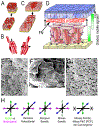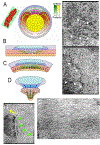Convergent extension in the amphibian, Xenopus laevis
- PMID: 31959291
- PMCID: PMC7132997
- DOI: 10.1016/bs.ctdb.2019.11.013
Convergent extension in the amphibian, Xenopus laevis
Abstract
This review is a comprehensive analysis of the cell biology and biomechanics of Convergent Extension in Xenopus.
Keywords: Convergent extension; Gastrulation; Xenopus.
© 2020 Elsevier Inc. All rights reserved.
Figures





References
-
- Vogt W 1929. Gestaltanalyse am Amphibienkein mit ortlicher Vitalfarbung. II. Teil. Gastrulation und Mesodermbildung bei Urodelen und Anuren. Wilhelm Roux Arch. EntwMech. Org 120, 384–706. - PubMed
-
- Condic ML, Fristrom D, and Fristrom JW, 1991. Apical cell shape changes during Drosophila imaginal leg disc elongation: a novel morphogenetic mechanism Development 111, 23–33. - PubMed
-
- Bissen ST and Weisblat DA 1989. The durations and compositions of cell cycles in embryos of the leech, Helobdella triserialis. Development 106, 105–118. - PubMed
Publication types
MeSH terms
Substances
Grants and funding
LinkOut - more resources
Full Text Sources
Other Literature Sources

